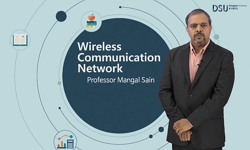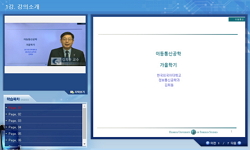In almost every country, the proportion of people aged over 60 years is growing faster than any other age group. This population ageing can be seen as a success story for public health policies and for socioeconomic development, but it is also a chall...
http://chineseinput.net/에서 pinyin(병음)방식으로 중국어를 변환할 수 있습니다.
변환된 중국어를 복사하여 사용하시면 됩니다.
- 中文 을 입력하시려면 zhongwen을 입력하시고 space를누르시면됩니다.
- 北京 을 입력하시려면 beijing을 입력하시고 space를 누르시면 됩니다.
IEEE 802.15.4 무선센서네트워크와 CDMA 네트워크 환경에서의 통합형 개인 모바일 헬스케어 진단 시스템 설계 및 구현 : Design and Implementation of Integrated Personal Mobile Healthcare (M-Health) Diagnosis System in IEEE802.15.4 WSN and CDMA Network Environments
한글로보기https://www.riss.kr/link?id=T11510502
- 저자
-
발행사항
부산 : 동서대학교 디자인 & IT 전문대학원, 2008
-
학위논문사항
Thesis(Master) -- 동서대학교 디자인 & IT 전문대학원 , 유비쿼터스IT학과
-
발행연도
2008
-
작성언어
영어
-
주제어
헬스케어 진단 시스템 ; 무선선세네트워크 ; CDMA
-
발행국(도시)
대한민국
-
형태사항
v, 88 p. ; 26cm
-
일반주기명
지도교수 :정완영
- 소장기관
-
0
상세조회 -
0
다운로드
부가정보
다국어 초록 (Multilingual Abstract)
In almost every country, the proportion of people aged over 60 years is growing faster than any other age group. This population ageing can be seen as a success story for public health policies and for socioeconomic development, but it is also a challenge for society to adapt. Fostering policy advocacy, promoting healthy lifestyle, reducing health risk and increasing quality of life are the highlighted issues to active ageing worldwide. Many individual will face the risk of having at least one chronic disease such as hypertension, stroke, diabetes, heart disease and others as they aged. Although chronic diseases are among the most common and costly health problems, they are also among the most preventable. Thus, all countries are preparing to address the consequence of demographic trends, dealing with the increasing burden of chronic disease required health promotion and disease prevention intervention at community level as well as disease management strategies within their healthcare system.
The new advances in the fields of mobile technologies, wireless communications and vital parameter sensors permitted data gathering, embedded computation in physical environment, impacted the delivery and study of resuscitative care by allowing physiological signs to be automatically collected and fully integrated into the patient care record and used for real-time triage, correlation with hospital records, and long-term observation. As a response to the challenge of delivering high quality healthcare system, a novel of design and implementation of integrated personal Mobile Healthcare diagnosis (M-Health) system in IEEE802.15.4 and Code Division Multiple Access (CDMA) network environments is describe in this paper.
The main aim of this system is to delivery multi-parameter monitoring health care to patients with anyway and anywhere assistance. The adoption of WSN and cellular network in this system helps to create a well-establish quality, wide coverage area, improved capacity and enhanced QoS heterogeneous platform to support various environments including hospital, home and also during travelling more effectively. In that sense, the system provides the necessary interoperability layers to access the patient’s physiological signs from medical devices and routes seamlessly to the medical center or known as Server via IEEE 802.15.4 WSN or CDMA network.
M-Health system has ability to capture, analyze and record multi-parameters such as blood pressure and ECG signals. Deployment of cell phone in M-Health system enables healthcare monitoring of patients could be done even they move without any intrusion. A distinctive feature of locally analyzes ECG signals is implemented at cell phone that carried by patients is to detect the abnormalities of ECG signals immediately at the place where the signal is acquired. This can help to generate an early warning to the healthcare team and thus they can provide immediate medical support to the patients who are in the critical condition.
Sending all ECG signal including normal signals over CDMA network is not an efficiency solution and it could imply a high cost. Mobile application is thus designed to send only detected abnormally ECG signals to medical center. Nevertheless, in the case when the wireless communication is not available e.g. inside tunnel or lift, patients can still perform self-monitoring of their health condition at cell phone with the help of locally ECG diagnosis feature. This can help to reduce the loss of ECG signals with corresponding risk of not detecting some anomalies. In this way, M-Health system provides patients a low cost, continuously and unobtrusive ubiquitous multi-parameters monitoring assistance at anytime anywhere at the same time also optimizing the limited and expensive resources like cell phone memory size and cellular network communication cost.
목차 (Table of Contents)
- Chapter 1 Introduction 1
- 1.1 Motivations 2
- 1.2 Design Goals 4
- 1.2.1 Wide Coverage Area 4
- Chapter 1 Introduction 1
- 1.1 Motivations 2
- 1.2 Design Goals 4
- 1.2.1 Wide Coverage Area 4
- 1.2.2 Portable and Flexibility 4
- 1.2.3 Prevention, Early Detection and 5 Diagnosis
- 1.2.4 Resource Optimization 5
- 1.2.5 Accessibility 5
- 1.3 Design Issues and Challenges 6
- 1.4 Organization of Thesis 6
- Chapter 2 Related Works 7
- 2.1 Related Wireless Healthcare Systems 7
- 2.1.1 Welch Allyn Cardio Control 8
- 2.1.2 CodeBlue 9
- 2.1.3 WEALTHY 11
- 2.1.4 Others 13
- 2.2 Chapter Summary 14
- Chapter 3 Electrocardiogram (ECG) 16
- 3.1 ECG Waveform 16
- 3.1.1 P Wave 17
- 3.1.2 RR Interval 17
- 3.1.3 QRS Complex 17
- 3.1.4 ST Segment 18
- 3.1.5 T Wave 18
- 3.1.6 U Wave 19
- 3.1.7 QT Interva 19l
- 3.2 Why ECG? 19
- 3.3 How ECG is Perform? 20
- 3.4 Considerations 22
- Chapter 4 Coronary Heart Disease (CHD) 23
- 4.1 CHD Risk Factors 23
- 4.1.1 Risk Factors that are Fixed 23
- 4.1.2 Risk Factors You can Control or Treat 24
- 4.2 Prediction of CHD using Risk Factor Categories 25
- 4.2.1 Coronary Prediction Score Sheet Approach 26
- 4.2.2 Users’ Awareness 29
- Chapter 5 System Design and Implementation 31
- 5.1 Architecture 31
- 5.2 Hardware Devices 34
- 5.2.1 Medical Device 34
- 5.2.1.1 Crossbow’s MicaZ Mote 34
- 5.2.1.2 MaxFor’s TIP710CM Mote 36 5.2.1.3 Lab Designed USN Mote 38 5.2.2 Wireless Dongle Prototype 40
- 5.2.3 Software Design 41
- 5.3 M-Health Monitor 43
- 5.3.1 Software Deployment Environments 43
- 5.3.2 Software Design Issues 45
- 5.3.2.1 Difficulty in Debugging 45
- 5.3.2.2 Limitation and Deviation of Emulator 46
- 5.3.2.3 Complexity of Procedures 46
- 5.3.3 Modular Implementation 48
- 5.3.3.1 Authentication Module 49
- 5.3.3.2 Menu Module 49
- 5.3.3.3 Patient List Module 50
- 5.3.3.4 Server Query Module 50
- 5.3.3.5 Data Acquisition Module 51
- 5.3.3.6 Data Processing Module 52
- 5.3.3.7 ECG Analysis Module 53
- 5.3.3.8 ECG Interface Module 56
- 5.3.3.9 CHD Risk Calculator Module 56
- 5.3.3.10 Report Module 59
- 5.4 M-Health Center 60
- 5.4.1 PC Based ECG Monitoring 60
- 5.4.2 Database 61
- 5.4.3 Healthcare Management Program 62
- 5.4.4 Web Services 65
- 5.5 Chapter Summary 68
- Chapter 6 Experimental Results 69
- 6.1 ECG Test Bed 69
- 6.2 Test Bed Set Up 69
- 6.3 Results 71
- 6.3.1 Within WSN Area 72
- 6.3.2 Outside WSN Area 73
- 6.4 Chapter Summary 76
- Chapter 7 Conclusions and Future Works 77
- Bibliography 78
- List of Publications 81
- Appendices 83
- Appendix A 83
- Appendix B 83
- Appendix C 84
- Appendix D 85
- Appendix E 86
- Appendix F 87










